The latest iOS 17 introduces several Safari settings for iPhone that you must try right now. Make sure you update the Safari browser to the latest version.
Safari, as you know, the native browser of Apple devices, is known for its enhanced security and browsing experience. This article explains different Safari settings, including old and newer ones, how you can utilize them for seamless browsing or improve privacy, and a quick glimpse into Safari’s parental control settings.
Understanding Safari for iPhone settings
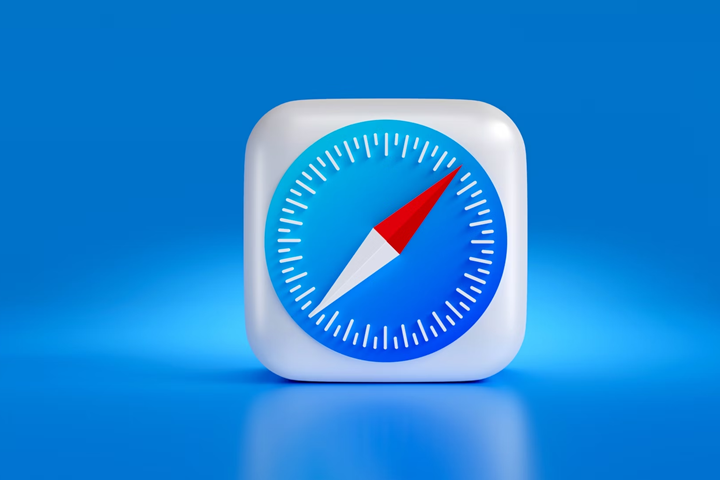


Over the years, Safari has introduced new features or settings to enhance user browsing experience and privacy.
Prevent Cross-site Tracking
Enabling “Prevent Cross-site Tracking” prevents you from tracking websites that aim to target you for ads and customize your experience. Go to Settings> Safari > Privacy & Security > Prevent Cross-Site Tracking.
Change search engine
Except for Google, you can choose different search engines such as DuckDuckGo and Bing. Unlike Google, DuckDuckGo allows you to access the internet anonymously- though limited. Yet, it prevents you from showing targeted ads. To enable it, Go to Settings > Safari > Search Engine > DuckDuckGo.
Autofill
You do not need to put the same data (e.g. email, username, credit card data) twice for future use. Safari records private data (if you allow it). As a parent, you can disable this feature to prevent children from purchasing and accessing specific sites using your details (e.g., email addresses, phone numbers, etc.). Go to Settings > Safari > General > Autofill > Turn off Use Contact Info & Credit Cards.
Block cookies
For privacy, you can disable third-party cookies. The downside- your online experience will be less convenient. To block cookies, go to Settings > Safari > Privacy & Security > Block All Cookies.
Location services
To provide location-based features and suggestions, Safari takes permission to turn it on. Go to Settings > Safari > Settings For Websites > Location > Ask/ Deny (if you select “deny”, Safari will ask permission every time at specific conditions).
IP address
By default, any website can detect your IP address, allowing them to track your location or personal information. You can hide it too. Go to Settings > Safari > Privacy & Security > Hide IP address > Tap on From Trackers.
Access website settings in iPhone Safari
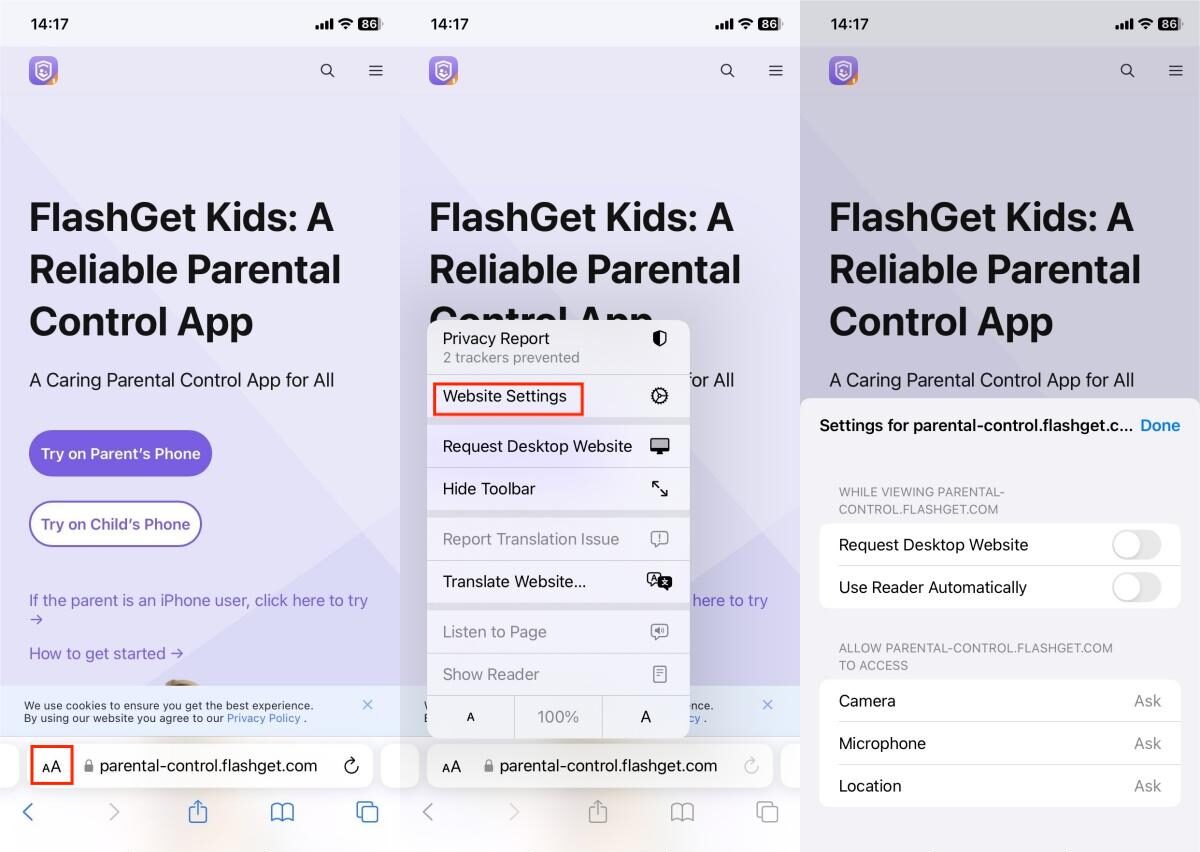


iOS 13 has introduced new features in Safari browsing including changing the site’s page and customize per website. Let’s have a look at its key features.
Change site’s page site
You can pinch out to Zoom so that you can view texts easily- ideal for websites that have smaller texts. To enable Zoom, you have to tap on Reader View. Now this icon has moved to “AA”.
Website data
This feature was only available for MAC users, but iOS 13 introduced this feature on iPhone too. Website data indicates a list of websites you visited and the amount of data each website is storing on your device. To check, go to Settings > Safari > Scroll down to Advanced> Tap on Website Data > Show All Sites (it may take a few seconds to load the websites). If you want to remove website data, then tap on Remove All Website Data.
Hide toolbar
The older version of Safari hides the top and bottom toolbars when scrolling down a webpage. Now with the iOS 13 updates, you can hide toolbars permanently. Just tap on “Hide Toolbar” in the new menu. To get them back, tap on the shrunken URL bar at the top. All controls will appear as usual.
Fast scroll
This is quite a new feature. You can now easily fast-scroll a page. Just press the scroll bar on the left and move up or down.
Choose photo size
With the iOS 13 update, you can now easily choose photo sizes (e.g. small, medium to large).
Download manager
Download Manager at the top right to the URL bar allows you to keep track of downloading, download files in the background and view the preview of the download.
Set the timer to auto-close tabs
Unavailable in the older version, this feature allows you to automatically close tabs after a specific time. When you click on tab viewer mode, it prompts “Automatically Close Tabs”.
Strong password
Safari now suggests you create strong passwords and give you warnings regularly.
Share web pages as PDFs or Archives. Now you can share Webpages as PDFs or Web Archive.
Private mode has a new look
When opening private mode, the toolbar turned dark grey and the URL bar light grey in the older version, making it harder to identify your preferred mode. With iOS 13 updates, the URL bar is still light grey while Safari adds a huge box that says “Private Browsing Mode” – to ensure you’re in private browsing mode.
Set up iPhone Safari to enhance your privacy
- For privacy, choose Private Browsing to open private tabs. It doesn’t count on History or on the list of tabs of connected devices (even if you’re signed in with the same Apple ID). To enable it, go to open Safari app > click on the tab icon > Swipe right in the tab bar at the bottom of the screen until Private Browsing opens > Tap Unlock.
- Safari has in-built Intelligent Tracking Prevention that prevents trackers. You can review the Privacy report of the trackers or prevent by Intelligent Tracking Prevention. Open the Safari app on your iPhone > Tap on the AA icon > Tap Privacy Report.
- To avoid creating a detailed profile about you by websites and network providers, you can subscribe to iCloud+ for privacy. Through it, you can utilize iCloud Private Relay. Turning it on allows you to prevent websites from seeing your IP address and prevent detecting your exact location. Additionally, it prevents network providers from collecting your browsing history.
- Do not turn the option “Fraudulent Website Warning” off, as Safari browser, by default, warns against suspected vulnerable websites.
Set up iPhone Safari to optimize your browsing experience
Gone are the days when extensions were particularly available for PC users. You can now add your favorite extension on your iPhone’s Safari browser for extra functionality and productivity.
Extensions for your iPhone’s Safari browser
It is quite different to add them than installing and removing extensions in Safari on a Mac. To add extensions, go to Settings > Safari > Tap on Extension (under General subsection) > you’ll see a list of available extensions > choose the preferred one.
To activate the particular extension, launch Safari > Tap on the AA button (at the top address bar) > Tap on Manage Extensions > Select the extension you want to activate.
Note: If you don’t see extensions, tap on More Extensions to visit the Safari Extension store.
Activate Reader
If you’re an avid reader, you can utilize the Reader option in Safari Browser. It makes reading distraction-free without ads. Reader allows you to customize color, font and size. To activate, tap on the AA button (located on the address bar) > Website Settings > toggle on Use Reader Automatically.
Note: This feature works on specific websites.
Open in background
In the earlier days, when you open a tab via a hyperlink, you are redirected to the new tab by default. Safari allows you to open tabs in the background. It is pretty good when you have to open multiple tabs. To enable it, go to Settings > Safari > Open Links (under the tab subsection) > tap on In Background.
Optimize start page
For a better browsing experience, you can even optimize the start page. You can reorder different sections such as Frequently Visited, Reading List, Favorites, and so on. You can also change the background image. To customize it, scroll down to Safari’s start page and tap Edit. Now, reorder the sections by pressing or dragging the three horizontal lines.
Additionally, you can request the desktop version of any website by tapping the option “Request Desktop Website”. This feature is handy especially since there is limited functionality in mobile websites.
Tab Groups
iOS 17 comes with Tab Groups, allowing you to organize tabs effortlessly- so that you can easily recall and dismiss browsing sessions at your preference. To use Tab Groups, the tab icon (located at the bottom of the screen) will show the currently opened tabs. Now tap on the desired option “New Empty Tab Group” or “New Tab Group from (Number) Tabs”.
Can parents enhance children’s online safety through iPhone Safari settings?
Safari doesn’t have built-in parental control features. To set up parental controls on Safari, you can utilize the iOS built-in parental control features, which allows you to control kid’s online activities, including:
- Monitor Safari usage
- Set time limit
- Blocking adult content & websites
- Create blacklist/whitelist websites
Set Time Limit: On your kid’s iPhone, go to Settings > Screen Time > Tap on App Limits > Add Limit > Search for Safari > Set desired time limit > Tap Add.
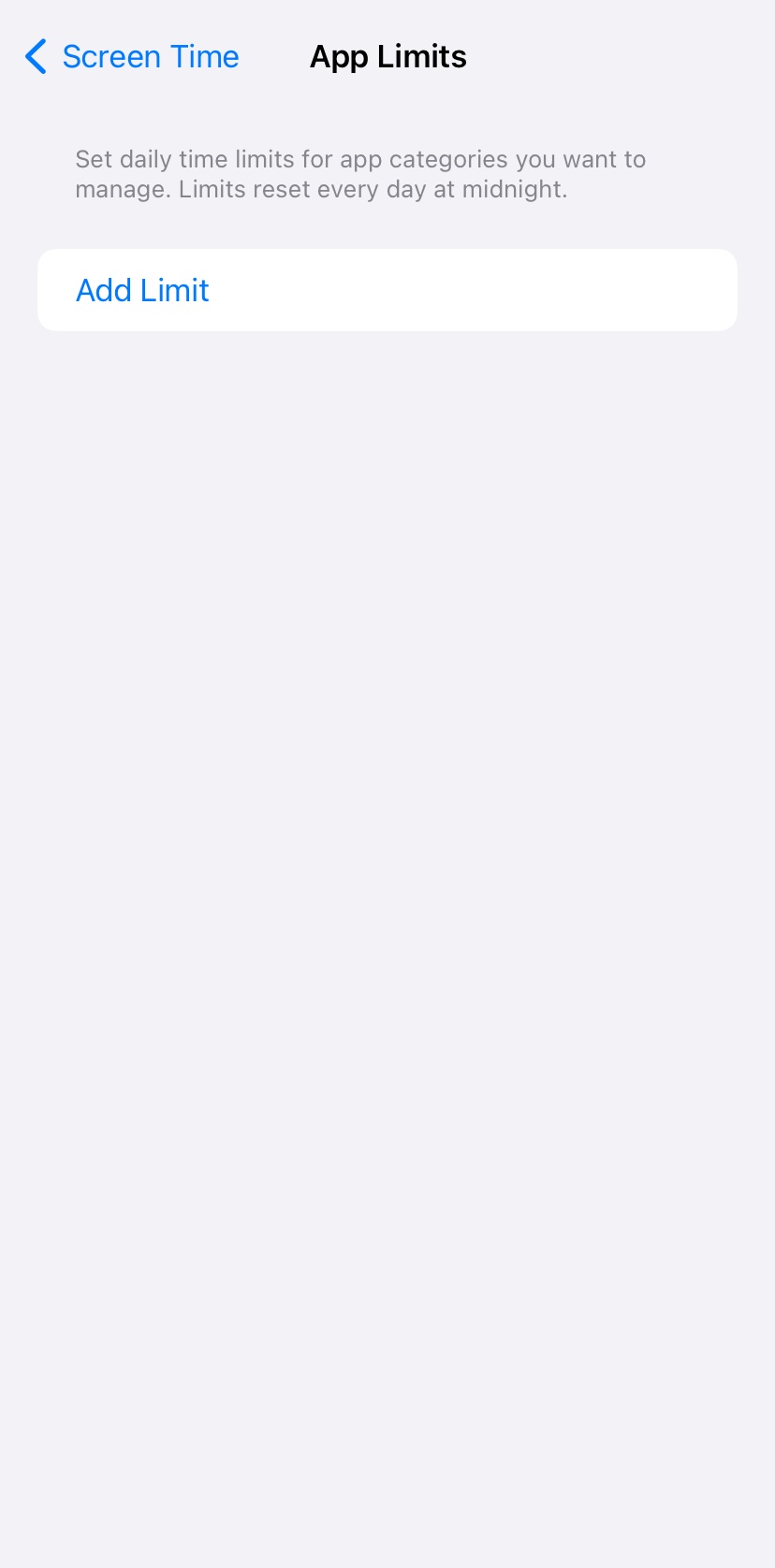


Blocking adult content: On your child’s iPhone, go to Settings > Screen Time > Content & Privacy Restrictions > Content Restrictions > Select your desired option (e.g. Unrestricted, Limit Adult Websites and Allowed Websites).
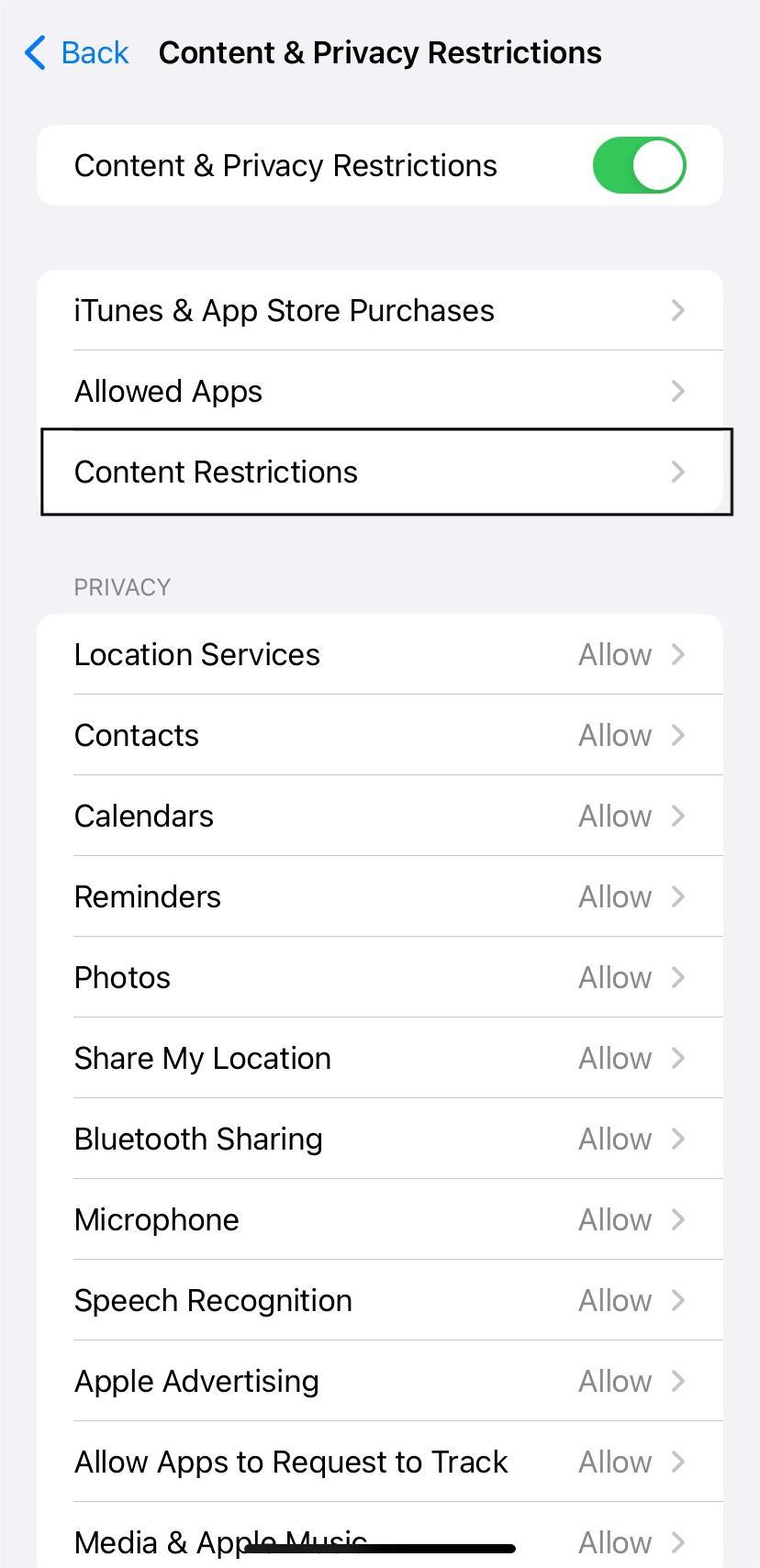


Restrict adult websites: On your child’s iPhone, go to Settings > Screen Time > Content & Privacy Restrictions > Content Restrictions > Web Content > Tap on Limit Adult Websites > Add Website > input the website you want to restrict.
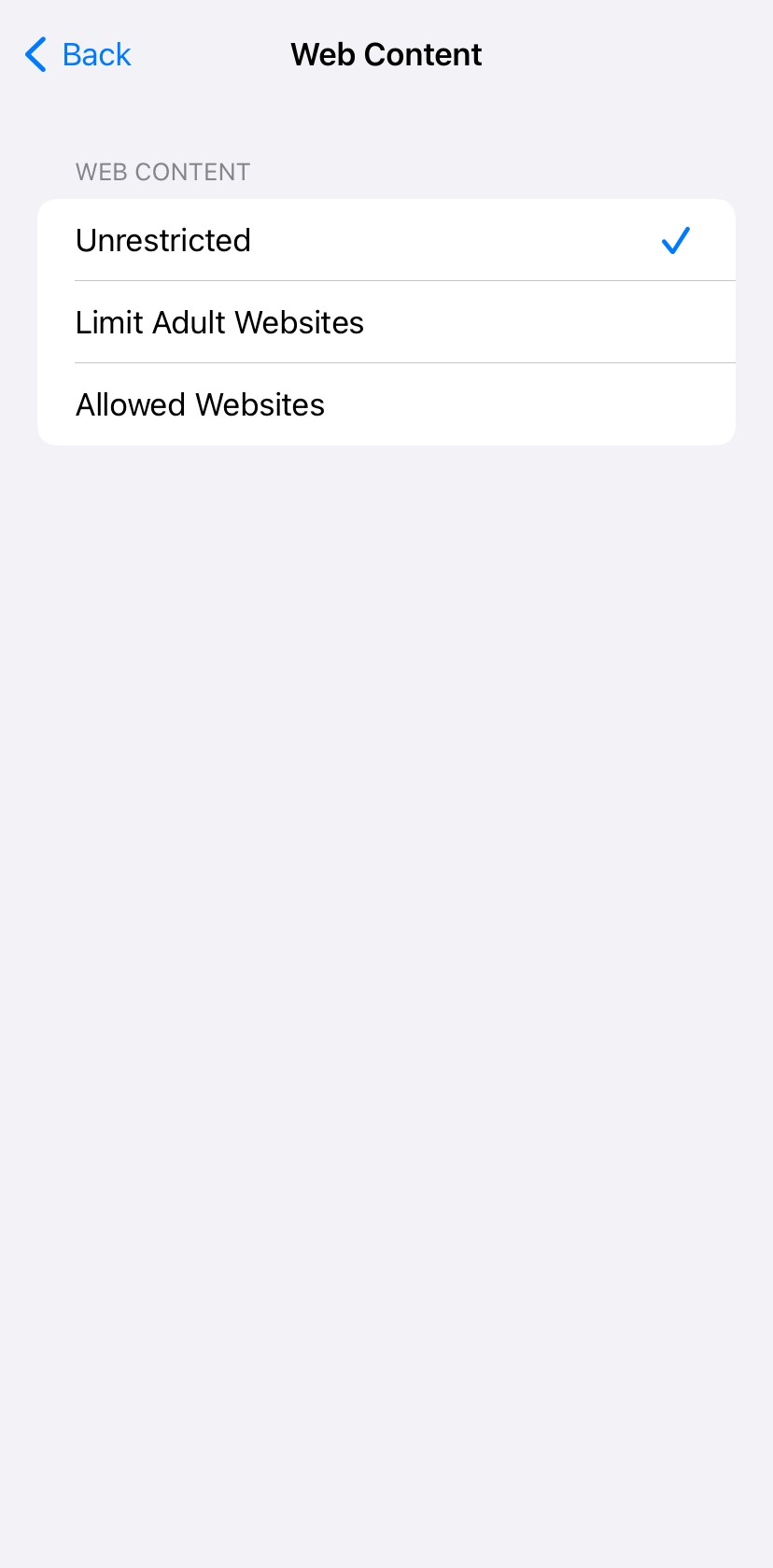


Downsides of Safari’s parental control features
- Kids can easily bypass screen time by extending the limit.
- Hard to track what your kid is browsing.
- Safari may still allow restricted content.
It is fair to say that Safari’s parental control features have their limitations, and children can easily bypass them. To ensure keen supervision of your child’s online activities, you can always choose parental control apps, giving you control over screen time and explicit content and embracing healthy digital habits.
Using parental control apps to further enhance children’s online safety
Parental control apps are handy in terms of setting screen limits, monitoring, and protecting against cyberbullying and online fraud. They tend to foster open communication between parents and children yet aid in academic focus by limiting distractions. One such app is FlashGet Kids. The following are the key features FlashGet Kids provides.
App Blocker and Tracking
Available for both Android and iOS users, FlashGet Kids allows you to set screen time that is right for your family. The App Blocker and Tracking feature aims to maximize app use. It allows you to customize kid’s digital habits and daily usage. For security, it provides content filtering, keeping your child away from inappropriate content. During potential dangers, it delivers alerts- always keeping you connected with your kids.
Remote Camera and One-way Audio
FlashGet Kids has a “Remote Camera” and “One-way audio”, allowing you to listen to or see your child even if you are not there.
Notification tracker
It includes a notification tracker, keeping you aware of the kid’s daily behaviors and mobile usage habits.
FAQs
Where is the Safari preferences tab?
Go to Settings > Accessibility > Per App Settings > Add App > Choose Safari to adjust the settings.
How do you reset Safari settings on your iPhone?
Go to Settings > Tap on Safari > Tap on Clear History and Website Data > Prompt appears “Clear History and Data”. Remember: It will only clear history and data. Other settings like bookmark and favorites, you have to reset manually.

